All About Peaches & FODMAPs
Are peaches low FODMAP? Yes, several kinds of peaches have low FODMAP serving sizes.
Monash University has four kinds of peaches listed in the smartphone app (3 fresh, 1 canned) and FODMAP Friendly has three (2 fresh and 1 canned). There are low FODMAP amounts, according to Monash, of white, yellow, clingstone, and canned peaches.
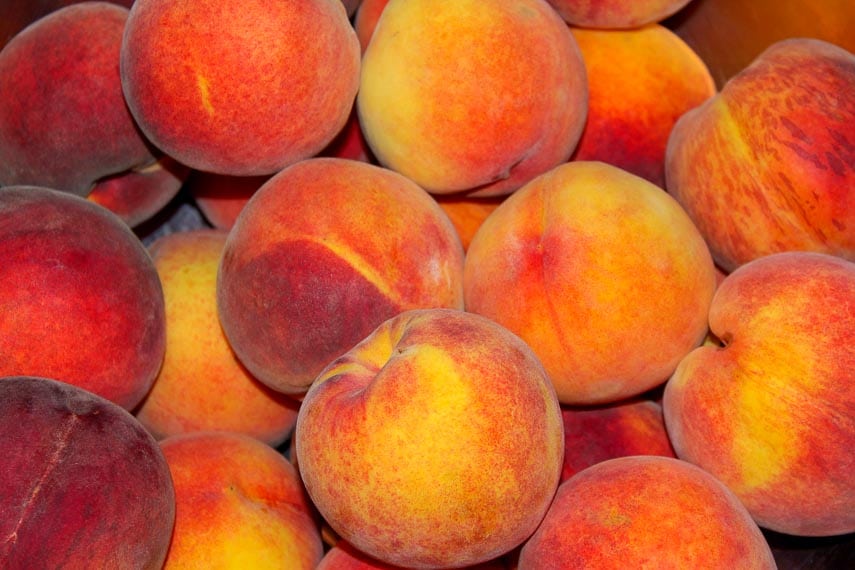
I will warn you up-front that comparing the lab tests from Monash and FODMAP Friendly is a bit confusing.
Are Peaches Low FODMAP?
Let’s take each type of peach that has been lab tested one at a time.
Peaches According To Monash University
- Yellow Peaches – low FODMAP at 30 g. Lab testing shows sorbitol.
- White Peaches – low FODMAP at 18 g. Lab testing shows sorbitol and fructans.
- Clingstone Peaches – no low FODMAP serving size. Lab testing shows sorbitol and mannitol even at 25 g.
- Canned peaches, drained of juice – no low FODMAP serving size. High for FODMAPs at ½ cup of 80 g. Lab testing shows fructans and sorbitol.
Peaches According To FODMAP Friendly
- Yellow Peaches – “Fail” at a whole 150 g peach. No amount tests as low FODMAP. Initial lab testing primarily shows fructans and fructose; more minor amounts of sorbitol and GOS. Subsequent tests showed sorbitol, fructose and fructans.
- White Peaches – “Fail” at a whole 150 g peach. No amount tests as low FODMAP. Initial lab testing primarily shows fructose; more minor amounts of sorbitol and GOS, with “0%” amount of fructans. Subsequent tests showed sorbitol, fructose and fructans.
- Peaches, canned/drained – “Fail” at .34 cup (80 g). No amount tests as low FODMAP. Lab testing primarily shows fructose and sorbitol, with some fructans, as well.
What Are Clingstone Peaches?
Peaches can be categorized by the relationship between the fruit’s flesh and the pit, also called the stone – as in, peaches are a stone fruit.
The flesh of clingstone peaches adheres quite stubbornly to their pits. This makes them practically impossible to separate from one another and you cannot get nice, crescent shaped slices out of a clingstone.
The opposite of a clingstone is a freestone. With these the pit removes quite easily.
Clingstone and freestone peaches can be both yellow and white varieties.
Most canned peaches, at least in the U.S., are made from clingstone.
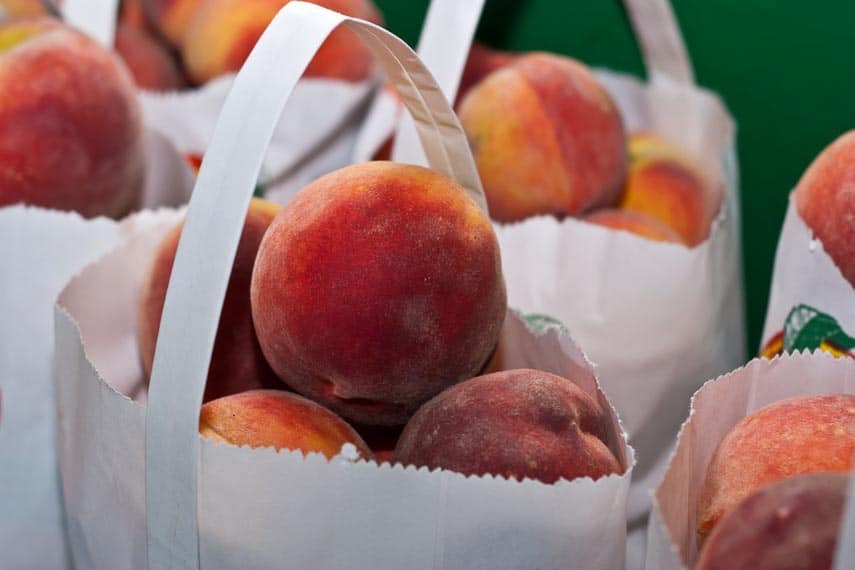
How To Buy
Color can be deceiving as some peach varieties will sport quite a bit of red, and other will not, but that is not a reliable indicator. That said, the background of the peach should be a rich yellow (although white fleshed peaches will be a tad less so) and not sport any green at all, regardless of variety.
The red blush is just an indicator of where the sun hit directly.
They should be firm and heavy for their size with no bruising or soft spots. Avoid any with wrinkled or shriveled skin, which is a sign of dehydration and a lack of freshness and/or poor storage.
A faint peach smell is a good sign. A slight softness felt when pressed near the stem end indicates ripeness, as does a peachy aroma.
How To Store
Do not wash peaches before you store them. Keep in a single layer to prevent bruising and some say storing stem side down can help them ripen.
You can place in a paper bag, with or without a banana or a slice of apple, to hasten ripening. The ethylene gas thrown off by the other fruit will help move the ripening process along.
If your peaches are already ripe, they are best eaten as soon as possible. You can refrigerate them for a few days, however they will lose some moisture and their texture will degrade.
Below is a fruit rack that I bought in Paris many years ago. It is one of my favorite kitchen…things. I don’t know what to call it. It isn’t a tool exactly. It helps soft fruits ripen perfectly without getting bruised. I love it and have never been able to find another (for gifts). If anyone has ideas where to get these, let me know!
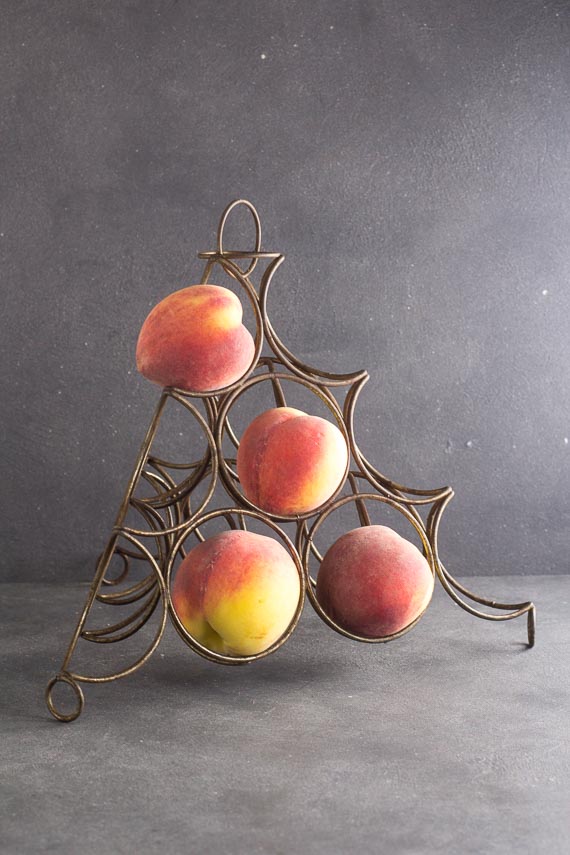
How To Use
Peeling Peaches
Some recipes call for peeling peaches and there are two ways to go. If you have firm peaches and a sharp vegetable peeler, you might have some luck peeling the skin directly.
Most cooks take the blanching route. Bring a large pot of water to a boil. Drop a couple of peaches in at a time and allow to boil for about 10 to 30 seconds (it can vary widely). Check to see if the skin feels like it has detached from the flesh; if the skin has split, definitely remove them right away. Remove from the water and immediately plunge into ice water to stop cooking. Use a sharp paring knife to peel away the skin, which should easily peel off. Sometimes you can just slip it off with your fingers.
Freezing Peaches
While we will be using peaches in small amounts in low FODMAP cooking, you might want to save some fresh ones, taking advantage of when they are available. Place peeled peach wedges on a sheet pan. Freeze until solid, then transfer to zip top bags and freeze for up to 1 month, at least, and possibly longer – up to 3 months. Frozen peaches, defrosted or not, or best used in smoothies and cooking and baking as opposed to eating plain.
Peach Recipes
We are starting to add more and more recipes using small amounts of peaches. For now try these:
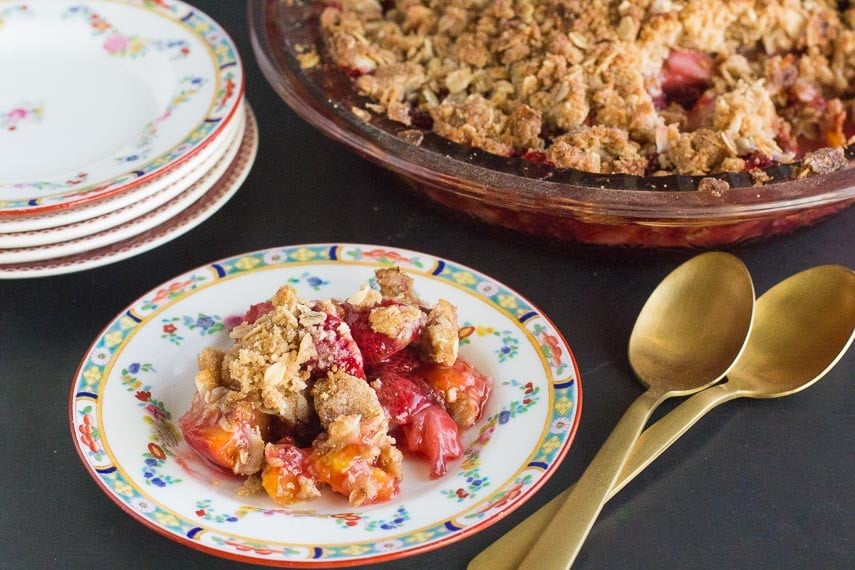
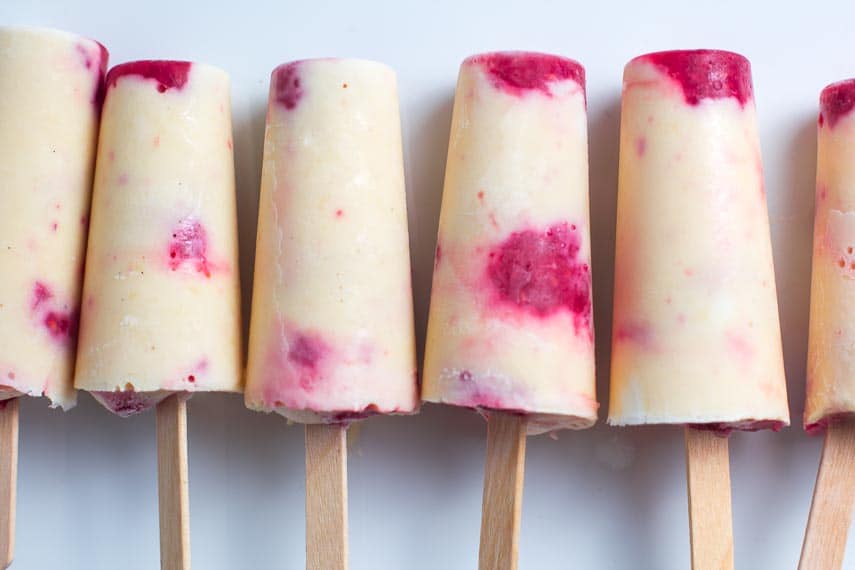
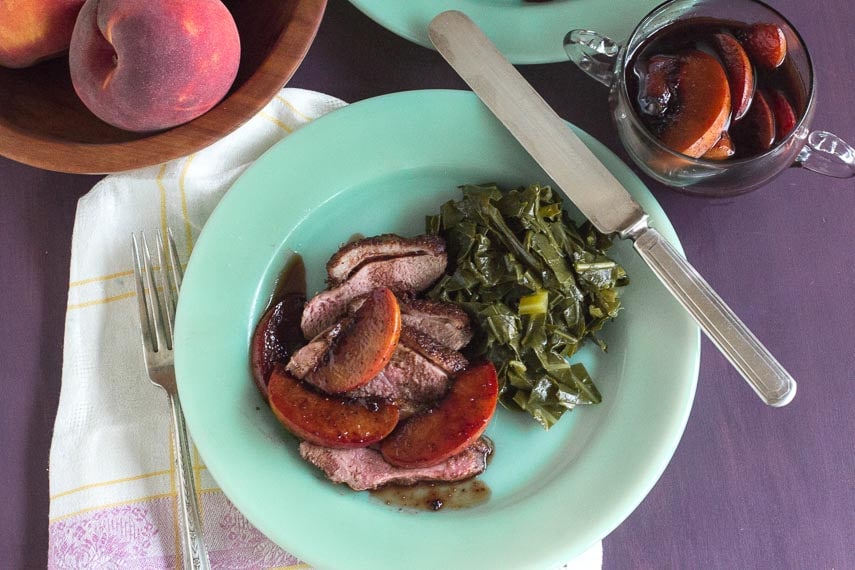
The Takeaway
Peaches can contain many different kinds of FODMAPs. We are using the Monash yellow peaches to work with, as they have shown a low FODMAP amount in the greatest serving size. If you are trying to decide whether to try peaches or not, and which kind, we suggest that you do so when you are stable and start with small amounts. Read these articles to help with your decision:
- What Is A Low FODMAP Serving Size?
- Ask The Right Question: Is It Low FODMAP vs. Can I Tolerate This?
- What To Do If A Food Is Not Lab Tested

